 2001 Hyundai Avante Dimensions, Size & Specs
2001 Hyundai Avante Dimensions, Size & SpecsMeasurements of the 2001 Hyundai Avante, engineered for optimal performance and comfort
| Dimensions | |
|---|---|
| Length: | 4460-4520 mm175.6-178.0 in14.6-14.8 ft |
| Width: | 1700-1720 mm66.9-67.7 in5.6-5.6 ft |
| Height: | 1425-1460 mm56.1-57.5 in4.7-4.8 ft |
| Trunk Capacity (Max): | 415 liter14.7 cu ft |
| Tire Specifications | |
| Tire Size: |
|
The 2001 Hyundai Avante hatchback, part of the first-generation Avante produced between 1999 and 2006, represents a compact yet practical vehicle tailored for urban use. This generation features a length ranging from 4460 mm to 4520 mm (175.6 to 177.9 inches), a width between 1700 mm and 1720 mm (66.9 to 67.7 inches), and a height falling from 1425 mm to 1460 mm (56.1 to 57.5 inches). These dimensions emphasize a balanced footprint, offering maneuverability in city traffic while providing interior space suitable for drivers and passengers alike.
Under the hatchback body style, the Avante exhibits versatility, especially with its luggage compartment. When the rear seats are folded down, the cargo space expands to 415 liters (approximately 14.6 cubic feet), accommodating more extensive loads and enhancing the car’s utility for everyday errands or light hauling needs.
The 2001 Avante rides on 175/65 R14 tires, highlighting a focus on fuel efficiency and ride comfort typical of compact hatchbacks from this era. The tire size complements the vehicle's overall dimensions for stable handling and road grip.
Overall, the Hyundai Avante first-generation hatchback stands out as a well-sized compact car from the early 2000s, offering practical dimensions that align with the demands of hatchback enthusiasts. Its moderate length and width contribute to ease of parking and urban navigation, while maintaining sufficient cabin space. This generation remains a relevant example for those comparing hatchback sizes or evaluating compact car options from that period.
Discover the standout features that make the 2001 Hyundai Avante a leader in its class
Have a question? Please check our knowledgebase first.
The Hyundai Avante from the 2001 generation measures between 4460 mm and 4520 mm in length (approximately 175.6 to 177.9 inches). The slight variation in length over its production years from 1999 to 2006 accounts for minor design updates and possible trim differences. This range makes the Avante a moderately sized hatchback, balancing interior space and maneuverability well for urban and suburban use.
The width of the Hyundai Avante (2001 generation) ranges from 1700 mm to 1720 mm (about 66.9 to 67.7 inches). This width places it firmly within the compact hatchback segment, providing a comfortable cabin space for passengers without being overly wide, which helps with narrower city streets and parking spaces. This width is typical for hatchbacks of this era and class.
The height of the Hyundai Avante (2001) varies from 1425 mm to 1460 mm (56.1 to 57.5 inches). This moderate height offers decent headroom for passengers, contributing to a comfortable cabin environment without compromising aerodynamic efficiency. The somewhat low profile also results in a sportier feel and easier handling dynamics compared to taller vehicles.
With the rear seats folded, the Hyundai Avante (2001 generation) offers a luggage capacity of approximately 415 liters (about 14.65 cubic feet). This capacity allows for a flexible cargo space, suitable for carrying larger items such as suitcases, sports equipment, or groceries. While not as large as some bigger hatchbacks or SUVs, it provides practical utility for everyday needs.
The Hyundai Avante (2001 generation) uses 175/65 R14 tires, which are relatively narrow and moderately sized for this compact hatchback. These tires contribute to a smooth and comfortable ride by absorbing road irregularities well, and also help in maintaining good fuel economy due to lower rolling resistance. The smaller wheel size aids maneuverability and precise handling, especially in urban environments.
Yes, the Hyundai Avante from 2001 should fit comfortably into a standard garage. Standard residential garages usually have dimensions around 2400 mm (width) by 4800 mm (length) or more, and with the Avante's width spanning up to 1720 mm (67.7 inches) and length up to 4520 mm (177.9 inches), it leaves ample clearance on both sides and in front/back. This makes it a convenient vehicle for typical household parking.
Compared to its predecessor, the 1995-1998 Avante generation, the 2001 Hyundai Avante grew slightly in size. The newer generation ranges from 4460 mm to 4520 mm in length compared to a shorter predecessor. Similarly, incremental increases in width and height were made to enhance interior comfort and cargo capacity. These dimensional gains reflect Hyundai’s focus on improving passenger space and refining the vehicle's design for a more modern and competitive compact hatchback.
When compared to similar compact hatchbacks from the early 2000s, such as the Toyota Corolla hatchback or Volkswagen Golf Mk4, the Hyundai Avante offers competitive dimensions. Its length (4460-4520 mm) and width (1700-1720 mm) situate it well within the segment. The 415-liter luggage capacity with folded rear seats is commendable for a car in this class, providing substantial practicality. It may be slightly less sporty in design but ranks well on comfort and usability fronts.
While precise weight figures for the 2001 Hyundai Avante vary by trim and options, typical curb weights are around 1100 to 1250 kg (2425 to 2755 lbs). This relatively light weight helps maximize fuel efficiency and nimble handling, which is vital for a compact hatchback designed for everyday use. The light bodywork allows the engine to work efficiently, resulting in an economical driving experience with adequate performance for city and highway driving.
The 2001 Hyundai Avante provides a comfortable interior typical of compact hatchbacks of its time. The slight increases in dimensions over previous generations enhance legroom and headroom for both front and rear passengers. The cabin is designed with functional ergonomics, offering adequate seating support and visibility. While it may lack some of the more modern luxury features found in newer cars, it focuses on practicality and straightforward usability, making it a reliable and comfortable vehicle for daily commuting.
Discover similar sized cars.
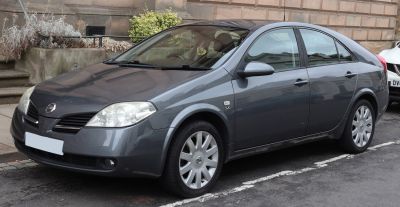
| Production: | 2002-2007 |
|---|---|
| Model Year: | 2002 |
| Length: | 4565 mm179.7 in |
| Width: | 1760 mm69.3 in |
| Height: | 1480 mm58.3 in |
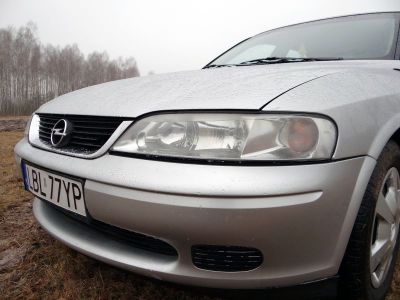
| Production: | 1999-2002 |
|---|---|
| Model Year: | 1999 |
| Length: | 4495 mm177.0 in |
| Width: | 1841 mm72.5 in |
| Height: | 1425 mm56.1 in |
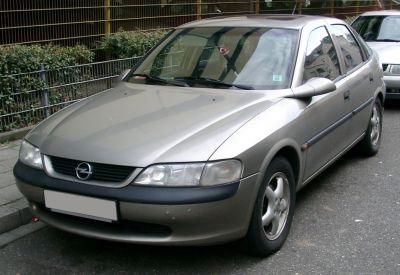
| Model Year: | 1996 |
|---|---|
| Length: | 4495 mm177.0 in |
| Width: | 1841 mm72.5 in |
| Height: | 1425 mm56.1 in |
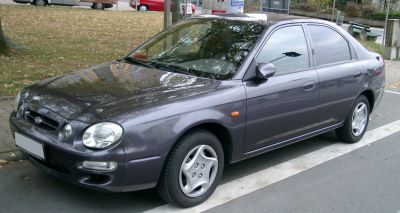
| Production: | 1997-2001 |
|---|---|
| Model Year: | 1998 |
| Length: | 4475 mm176.2 in |
| Width: | 1711 mm67.4 in |
| Height: | 1427 mm56.2 in |
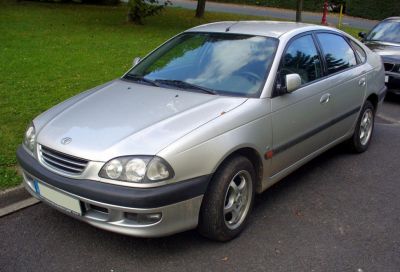
| Production: | 1997-2003 |
|---|---|
| Model Year: | 1997 |
| Length: | 4490 mm176.8 in |
| Width: | 1710 mm67.3 in |
| Height: | 1425 mm56.1 in |
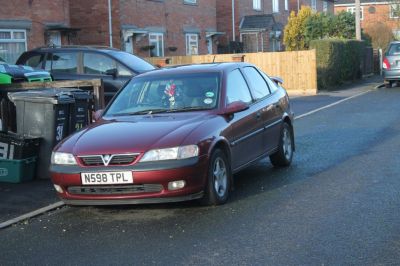
| Production: | 1995-1999 |
|---|---|
| Model Year: | 1995 |
| Length: | 4495 mm177.0 in |
| Width: | 1841 mm72.5 in |
| Height: | 1425 mm56.1 in |
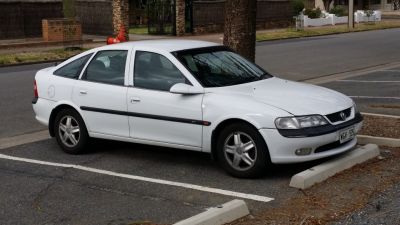
| Production: | 1998-2000 |
|---|---|
| Model Year: | 1998 |
| Length: | 4477 mm176.3 in |
| Width: | 1707 mm67.2 in |
| Height: | 1428 mm56.2 in |
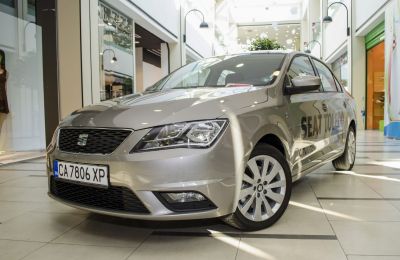
| Production: | 2012-2018 |
|---|---|
| Model Year: | 2012 |
| Length: | 4482 mm176.5 in |
| Width: | 1706 mm67.2 in |
| Height: | 1461 mm57.5 in |
